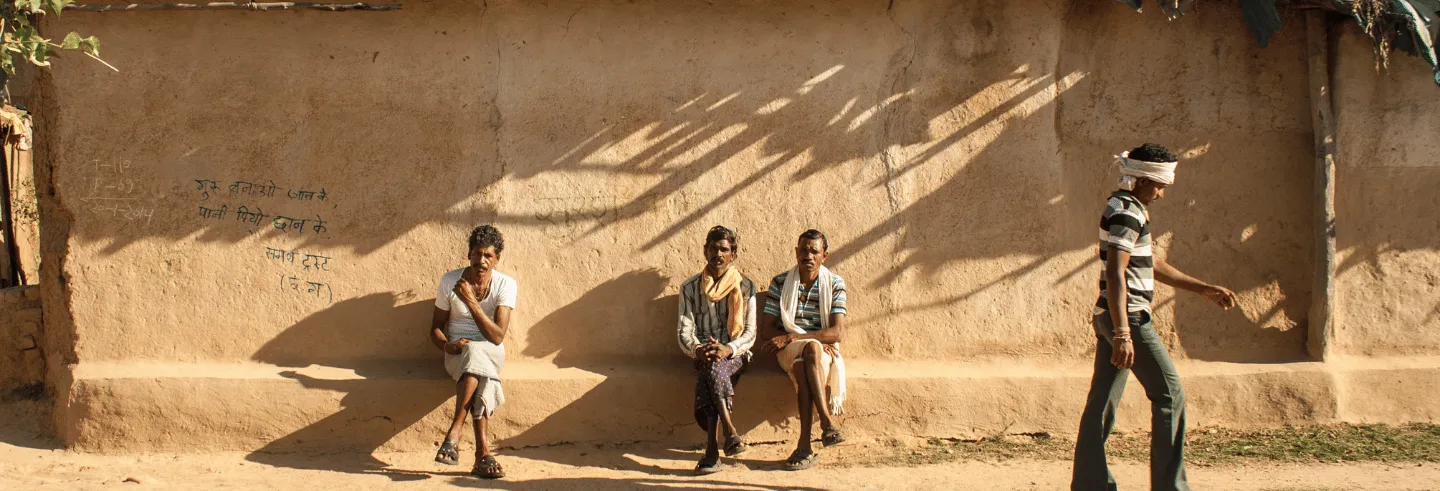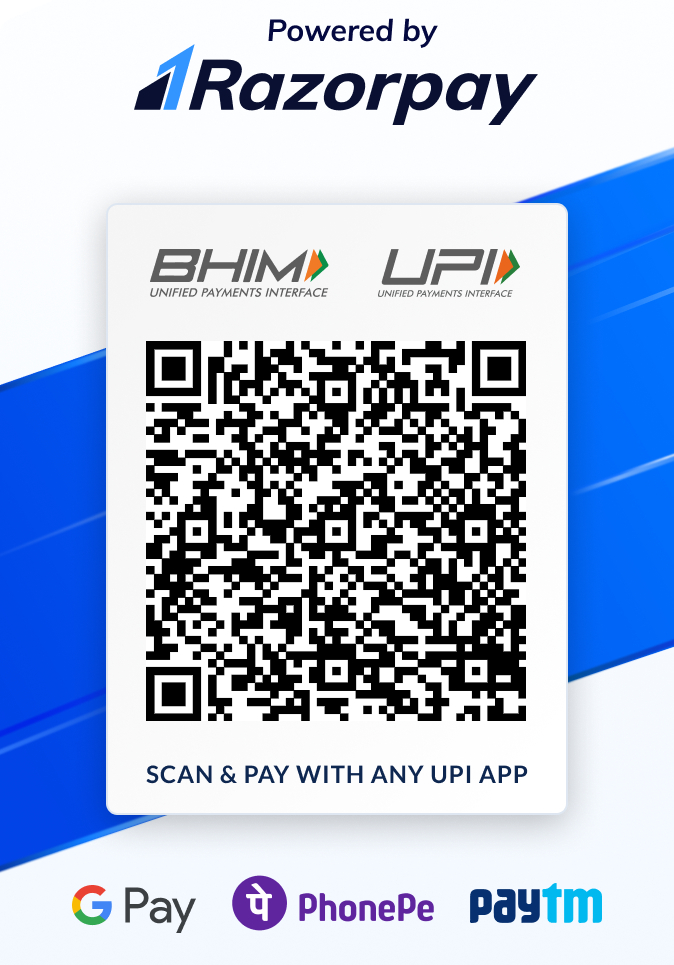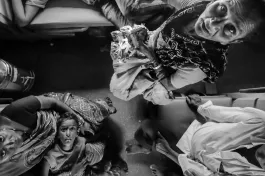Targeting the Vulnerable
In December 2023, the Government of India launched the PM Janjati Adivasi Nyaya Maha Abhiyan (PM JANMAN) scheme aimed at reaching out to Particularly Vulnerable Tribal Groups (PVTGs), a sub-category of Scheduled Tribes. These groups are identified based on certain characteristics—low levels of literacy, economic backwardness, use of minimal agricultural technology, and a declining or stagnant population. There are 75 notified PVTG communities across 18 states and the Union Territory of Andaman and Nicobar Islands, with a total population of 4.47 million (Ministry of Tribal Affairs 2023). Yet, systemic exclusion from welfare schemes often leaves them on the fringes of development.
The PM JANMAN scheme seeks to ensure their more inclusive development through targeted interventions in housing, connectivity, healthcare, education, and livelihoods. Its success is dependent on Aadhaar enrolment, which unlocks access to critical entitlements such as food subsidies and social security pensions. However, as this article argues, flaws in Aadhaar’s design and implementation limit the PM JANMAN scheme’s effectiveness, raising questions about equity and access for India’s most vulnerable citizens.
A significant aspect of the PM JANMAN scheme is ensuring all members of PVTG households have Aadhaar unique identity numbers because it regulates access to all crucial entitlements, including subsidised foodgrains, pensions, and healthcare. For PVTGs, the Aadhaar card is more than an identity document—without it, they would be excluded from welfare schemes, bank accounts, healthcare access, and disaster relief.
An earlier article published in The India Forum (“Tough Task Implementing PM JANMAN for Adivasi Upliftment”, 5 August 2024) discussed how a hurried design and gaps in estimating the population posed serious challenges to the PM JANMAN housing scheme. Similar flaws—outdated data systems, ambiguous procedures, and inadequate infrastructure—now hinder Aadhaar enrolment. Without Aadhaar, the broad promises of the PM JANMAN initiative remain inaccessible. In this article, we focus on the Aadhaar enrolment process to show that even this supposedly foundational step is fraught with exclusion.
Our research found that the Aadhaar system is designed in a way that makes even digitally literate citizens struggle to follow up on their applications. It was certainly not built with the realities of PVTGs in mind.
In remote tribal areas, not having an Aadhaar card excludes individuals from welfare schemes—it is critical for accessing entitlements such as food subsidies, pensions, and healthcare, regardless of other identity documents (Khera 2019). However, Aadhaar has remained inaccessible to many, particularly in the most remote villages.
As part of LibTech India, a research group working at the intersection of technology and welfare delivery, we studied the functioning of the Aadhaar infrastructure through field work carried out in the tribal blocks of Paderu and Rampachodavaram in Andhra Pradesh, and Koraput and Malkangiri in Odisha. We also did this through phone interviews with Aadhaar operators and excluded individuals in Jharkhand’s Simdega and West Singhbhum districts. Our research tracked Aadhaar applications under the PM JANMAN scheme, interviewed Aadhaar operators, and examined the enrolment infrastructure in these areas. Our research found that the Aadhaar system is designed in a way that makes even digitally literate citizens struggle to follow up on their applications. It was certainly not built with the realities of PVTGs in mind.
Aadhaar Ecosystem
To understand why PVTGs struggle with Aadhaar, we must first look at those responsible for enrolling them—the operators certified by the Unique Identification Authority of India (UIDAI). We interviewed 52 Aadhaar operators across three states. These individuals were trained, digitally literate, and equipped with enrolment tools, but they faced a system riddled with challenges. Machines frequently malfunctioned, internet connectivity was unreliable, and there were delays in receiving new equipment. Operators were paid meagre salaries and often spent from their own pockets to travel to remote villages. All the operators we interviewed said they could continue their work only by charging applicants more than what the UIDAI approved.
These difficulties are compounded by intense pressure from the UIDAI. Operators are penalised for procedural errors or technical missteps, sometimes with fines running into thousands of rupees. One operator in Andhra Pradesh was fined Rs. 5,000 for using an outdated form amid shifting guidelines. Another in Koraput, Odisha, was fined Rs. 15,000 for unknowingly uploading a document later flagged as fake. “I’m not a forensic expert—how am I supposed to know if a certificate is fake?” she asked.
Marri Sillo, a 70-year-old woman ... remained excluded because of biometric failures. Her fingerprints and iris scans were repeatedly rejected—a common issue among elderly PVTGs who often have worn fingerprints or vision problems.
Despite these hardships, only 12 of the 52 operators had even heard of the PM JANMAN initiative—underscoring a serious communication failure. If trained and relatively well-connected functionaries are unaware of such flagship programmes, what hope is there for the PVTGs? All the 10 operators we interviewed in Odisha and Jharkhand said they had neither received any communication nor training on Aadhaar enrolment under the PM JANMAN scheme.
Consider the case of V. Suresh, a tribal youth and computer science graduate in Malkangiri district, Odisha, who runs a customer service centre offering Aadhaar services. To keep the centre operational, he has to meet a monthly target of 300 enrolments. However, frequent technical failures and low turnout leads to deductions from his modest salary. Even when he meets the target, he earns no more than Rs. 9,000 a month. The constant threat of penalties adds to his stress and job insecurity. This shows how even those helping with Aadhaar enrolment are struggling—underlining how difficult the process is for PVTGs.
Why are PVTGs Excluded?
Across our study sites in Andhra Pradesh, Odisha, and Jharkhand, many PVTGs continued to be excluded from welfare entitlements because they lacked Aadhaar cards. In Andhra Pradesh’s Alluri Sitharama Raju (ASR) district, a survey of 1,000 Adivasis found that 3.6% of the adults were not on the Aadhaar rolls. The exclusion rate is likely to be higher among PVTGs, who often live in remote areas and face significant socio-economic disadvantages.
For instance, Gollori Laxmi, a 62-year-old woman from the Konda Reddi tribe in ASR district, was unable to access her pension, foodgrains, or other state support because she did not have an Aadhaar card. Despite multiple attempts over the past year, she had been unsuccessful in enrolling for an Aadhaar number. In another example, Marri Sillo, a 70-year-old woman from a PVTG community in Koraput district, Odisha, remained excluded because of biometric failures. Her fingerprints and iris scans were repeatedly rejected—a common issue among elderly PVTGs who often have worn fingerprints or vision problems (Sarin and Gupta 2022).
Enrolling for an Aadhaar number requires applicants to establish their date of birth, identity, and address. For adult members of PVTGs, this is particularly difficult. Many were born in a time of non-institutional births and lack formal birth records. The mandate for digital birth certificates, introduced by the UIDAI in January 2024, adds barriers for PVTGs because many lack access to online systems, and local authorities often cannot issue digital certificates. Without Aadhaar, they cannot obtain other identity documents such as ration cards or Mahatma Gandhi National Rural Employment Guarantee Act (MGNREGA) job cards.
Ground Reality
To address barriers to Aadhaar enrolment, the PM JANMAN programme allows relaxing certain norms. The standard operating procedure (SOP) issued by the UIDAI permits revenue and gazetted officers to verify the identity and age of individuals directly at Aadhaar camps. The officer is expected to confirm the person’s name, age, gender, address, and photo before enrolment. Once verified, they must write “Information verified” on the application form and affix their official seal.
Our tracking of 340 Aadhaar applications under the PM JANMAN scheme in Andhra Pradesh revealed that only 189 were successful. Enrolment centres—both mobile and permanent—frequently suffered from technical issues.
For instance, Gollori Laxmi should be able to walk into any Aadhaar enrolment camp in her locality. A designated official is expected to verify her date of birth, identity, and address, then sign the form, and affix the official seal. This certified document can be submitted to the Aadhaar operator for enrolment.
However, in practice, these provisions remain largely on paper. Our team verified 80 Aadhaar camps conducted under the PM JANMAN scheme and found that government officials were present in only 10 of them. Even in those, most officials were either unaware of their responsibilities or hesitant to certify documents, fearing repercussions. In several cases, instead of verifying documents at the enrolment site, officials asked people to visit their offices—defeating the very purpose of doorstep service.
The SOP offers no guidance to individuals attempting enrolment outside special camps. This leaves walk-in PVTG applicants without institutional support. Local bodies such as gram sabhas could play a crucial role in verifying identities where the SOP framework falls short. A decentralised approach could enable more inclusive and accessible enrolment.
Implementation challenges are further compounded by infrastructural failures. Our tracking of 340 Aadhaar applications under the PM JANMAN scheme in Andhra Pradesh revealed that only 189 were successful. Enrolment centres—both mobile and permanent—frequently suffered from technical issues. Permanent centres, located in banks, post offices, or customer service points, often had malfunctioning software or broken biometric devices, and their replacements took weeks to arrive.
Mobile units, intended for remote tribal areas, operated offline and frequently failed to sync data later due to poor internet connectivity. In ASR district of Andhra Pradesh, only 55 of 128 Aadhaar kits were operational. Frequent breakdowns, power outages, and software crashes slowed the enrolment process. Together, these administrative and technical failures severely undermine the PM JANMAN scheme’s goal of ensuring universal Aadhaar access to PVTGs.
Poor Follow Up
Even after someone is successfully enrolled, their Aadhaar card may never reach them. According to data accessed through a Right to Information (RTI) request, more than 1.57 lakh Aadhaar entries—covering both new enrolments and updates—for PVTG individuals were processed across the country as of 12 December 2024 under the PM JANMAN initiative. However, it is unclear how many of these individuals actually received their Aadhaar cards because the government does not track this information.
When Aadhaar failures block access to food, pensions, healthcare, and disaster relief, they violate fundamental rights guaranteed by the Constitution—most notably the right to life and dignity under Article 21, and the right to equality under Article 14.
Our multiple RTI queries to different government agencies revealed that they do not track whether Adivasis who enrolled actually received their Aadhaar cards. In most cases, officials only verified whether an enrolment had been recorded in the system—not whether the person had received the card. Confirming this would require manually checking records from Aadhaar operators, a time-consuming process that is rarely carried out.
On the ground, we found several cases where Aadhaar cards sent by post never reached their intended recipients. In Gaduthuru panchayat of ASR district, for example, 12 Adivasis from four different habitations successfully enrolled for Aadhaar, but none received their cards. We later found that their habitation names were missing from the Aadhaar address fields, making it difficult for postal workers to locate them. This reflected the SOP’s failure to ensure effective verification processes.
In some situations, people lost their Aadhaar cards while migrating for work or during heavy rain—both common in Adivasi areas. Reprinting the card requires either an enrolment ID or a registered mobile number, neither of which many PVTGs possess.
In all these cases, people often try to enrol again, but the system rejects their applications, stating that they are already enrolled. We met several individuals who had attempted to enrol two or three times—in some cases, up to eight times—at different camps without success. This highlights the need for not just enrolment drives, but also active support systems to help people navigate challenges, and a community-level grievance redress mechanism.
Is PM JANMAN Enough?
Aadhaar, intended to enhance welfare access, often ends up restricting it for PVTGs. The PM JANMAN scheme attempts to address this through relaxing norms for documentation and organising enrolment camps, but as our field work shows, weak infrastructure, untrained officials, and a lack of accountability continue to exclude many. The PM JANMAN initiative’s doorstep enrolment camps often fail when officials redirect PVTGs to distant offices, undermining accessibility.
This is not merely a matter of bureaucratic inefficiency. When Aadhaar failures block access to food, pensions, healthcare, and disaster relief, they violate fundamental rights guaranteed by the Constitution—most notably the right to life and dignity under Article 21, and the right to equality under Article 14. For individuals like Marri Sillo, whose biometric failures deny her entitlements, Aadhaar’s rigid architecture becomes a tool of exclusion rather than empowerment (Bhatia 2021).
If Aadhaar is to remain the backbone of welfare delivery, its design must be radically overhauled to ensure inclusivity. This means improving infrastructure, protecting the rights of those most at risk of being left out, and building robust grievance redress mechanisms. Equally important is exploring decentralised alternatives—such as using local government institutions like gram sabhas to verify identities when no biometric or documentary evidence exists. No Indians—especially the most vulnerable—should be denied their legal rights simply because the very system designed to include them is too difficult to access.
Chakradhar Buddha and B.D.S. Kishore are affiliated with LibTech India, an organisation focused on improving transparency, accountability, and democratic engagement in public service delivery.
The views expressed here are personal.










